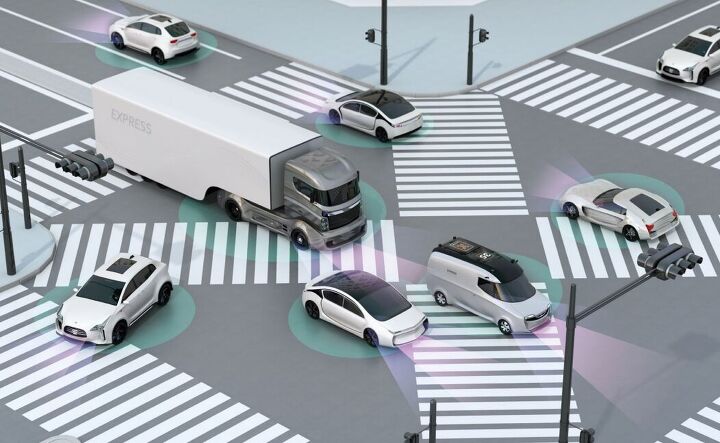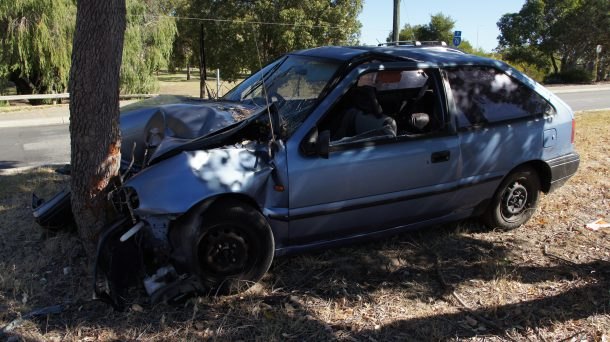#NationalSafetyCouncil
Pedestrian Deaths Ballooned Against Miles Driven Last Year
The Governors Highway Safety Association (GHSA) released the latest data pertaining to U.S. pedestrian fatalities — indicating that the largest-ever annual increase since we started keeping track in 1975. While the data is preliminary, the association estimated there were 6,721 pedestrian deaths in 2020. It’s a 4.8 percent increase over 2019 and not all that impressive until you realize most people basically gave up their normal driving routine during lockdowns. According to the GHSA, adjusting for miles driven actually results in an annual increase of 21 percent.
It’s genuinely creepy and kind of perplexing with everyone staying isolated. But we’re not going to recommend you start wearing high visibility jackets whenever you leave your home because the mathematical likelihood of being crushed by an automobile remains incredibly low.
U.S. Traffic Deaths Decline for Second Year in a Row
The National Safety Council just released its estimates for U.S. roadway fatalities in 2019, and there’s good news to share. Deaths declined for the second consecutive year. According to the NSC, traffic fatalities reached an estimated 38,800 last year, representing a 2-percent decline from 2018 and and a 4-percent decline against 2017.
While the NSC said the decline came “after several years of spikes,” we found the claim to be mildly misleading. Even though 2015 and 2016 posted meaningful increases in roadway deaths, safer streets have been in fashion since the 1970s. Most years since then have resulted in fewer crashes, with sporadic bad periods sprinkled throughout. If you’re interested in some supporting data from the National Highway Traffic Safety Administration, U.S. roadway fatalities per 100,000 people averaged around 26.01 in 1972. That figure fell to just 10.28 by 2014, with the combined 2015-2016 increases bumping it up to just 11.59 per 100,000 people.
NHTSA Deputy Administrator: There's No Need to Regulate Autonomous Cars
Heidi King, deputy administrator of the National Highway Traffic Safety Administration, claims it’s too soon to begin imposing rules on self-driving vehicles. Thus far, the NHTSA as taken a supremely lax posture on handling autonomous vehicles in the hopes that a softer touch will assist in their swift development.
However, a cluster of fatal incidents involving advanced driving technology created fresh paranoia within the government.
While the argument could be made that those accidents demand a response from federal regulators, it’s also clear the government doesn’t have a firm grasp on the technology. Likewise, there’s little consensus among automakers that have only recently begun discussing how these vehicles should be standardized, and loads of conflicting opinions exist on the matter of safety. In the short term, advanced electronic aids allow motorists to become worse at driving. But, if fully autonomous vehicles function as intended, their long-term safety benefits could be immense.
The NHTSA claims the resulting confusion means it’s too early in the process to make any kind of definitive rulings.
GM's 'Digital Marketplace' Under Fire Just a Day After It Was Announced
After announcing its new in-car marketplace earlier this week, General Motors is taking some heat from the National Safety Council. While we weren’t entirely sold on the shopping service either, our concerns revolved mainly around the automaker’s initial push into consumer data acquisition and targeted advertising.
We glossed over the safety angle, for the most part, mainly because we hadn’t yet played with the feature. However, the council’s worries focus squarely on the potential risk for distracted driving.
Upon marketplace’s release, GM tried to make clear that the service took those dangers into account, offering what it claims is a safer alternative to mobile phone use. But National Safety Council President Deborah Hersman believes the app will only create more accidents, hinting at the role cumbersome in-car technologies may have played in last year’s 5.6-percent rise in U.S. auto fatalities.
Hat Trick: Automotive Recalls Reach Record High for Third Year in a Row
Automobile manufacturers recalled an all-time high of 53.2 million vehicles in the United States last year. The record-breaking number would not have been possible without the continued expansion of the recall of extremely dangerous Takata airbag inflators, according to the U.S. Transportation Department. Of course, it’s not just Takata Corp. that helped make 2016 the worst year on record, so be sure to save your applause.
Encouraged by the Obama administration, the Department of Transportation enacted a whopping 927 recall campaigns last year. That’s 7 percent above the previous high set in 2015. Fatal accidents jumped up 10.5 percent that year, followed by another 8 percent in 2016.
Cheap Gas, More Driving Leading To More Fatal Crashes
The number of fatal traffic crashes has risen 14 percent over last year, and deaths on the road could top 40,000 — the first time since 2007 — the National Safety Council is reporting (via Autoblog).
The council points to lower gas prices and a better economy as reasons why people are driving more and crashing more.
The estimated economic impact of the crashes through the first six months of 2015 was $125 billion according to the council, up 24 percent from last year.




















Recent Comments